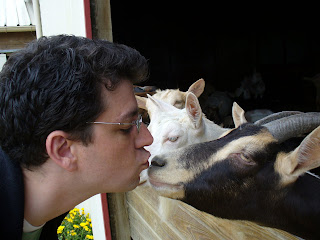The group went to the crocodile farm here in Pierrelatte on April 6. There are nearly 400 crocodiles, with 10 or more females for each male so there is little fighting. Eating crocodile meat is not allowed in France. The crocs are raised from the time they hatch until they can be released back to Africa. A veterinarian looks after them so they stay healthy, and Kent had a professional rendez-vous with a veterinarian here in this region, and another veterinarian here joined the group, and he was the doctor who looks after the crocodiles. The farm also raised giant turtles, and in the back room there was a replica of a pre-historic crocodile that could have eaten at least three of us just for breakfast.

Crocodiles often keep their mouths open to help regulate their body temperature.
Afterwards, we visited a couple of greenhouses, one for tomatoes and one for roses. Both of the greenhouses get energy from the nearby nuclear plant. After the greenhouses, we stopped for lunch at a lovely restaurant that is situated within a greenhouse, with lots of plants (including banana trees!). We dined on guinea fowl and, of course, wine.
Then, we actually had a chance to visit the nuclear power plant itself. Despite fears of glowing green when we exited, we all were up for the challenge. The top-security plant required our passports and several other security measures so that we could get a chance to see all the inner-workings of nuclear power. The guide explained to the team that with nuclear power, two tiny pellets of uranium are able to create the same amount of energy as one ton of gasoline. Incredible.

The Texas GSE team with a group of French Rotarians outside the nuclear power plant.
Our last stop for the day was a trip over to Orange to see the huge amphitheatre built back in Roman times. It can seat 8,000 people, which is more than the population of the entire town when the amphitheatre was built.
On Tuesday, our first stop was the goat farm, where goats are milked and cheese is made next door. We watched as the goats were fed and milked, and the dog who herded the animals to where they ought to be. Each goat eats one ton of hay each year!! They are milked twice a day, and each goat produces nearly two gallons of milk each day. There were some one-week-old baby goats there as well, and they will be ready to produce milk when they are one year old. The team headed next door where we bought all sorts of goat cheese, which we all thoroughly enjoyed tonight for dinner. Absolutely delicious!

David has finally found a girlfriend!
Immediately after, we walked over to a truffle farm, where truffles are harvested in the winter (November through March). So unfortunately the season was over, so we didn’t get to see Tina, the truffle-sniffing dog, in action. However, she did seem quite at home on the land and was always in the mood to chase a stick when not on truffle duty.
The team headed over to an old castle (one of the many in France) called Le château de Suze-la-Rousse, where the Université du Vin, or the University of Wine, is housed. Those enrolled learn the art of tasting and describing the flavors of different wines.

We were all dazzled by the gorgeous interior of this castle.
For lunch, we visited a family-owned (and Rotarian!) winery called Château la Croix Chabrière. A Rotarian Kent has deemed Mr. Truffle (because he knows just about everything there is to know about truffles) was generous enough to give time from his day to cook us all a fantastic lunch. We had all sorts of truffle-infused yummies – truffle butter on bread for the pre-appetizers (yes, pre-appetizers!), truffle and meat pate for the appetizer, truffle omelets for the main dish, and cheese with truffles in it afterwards. Then we had a chance to tour the private winery of the other Rotarian family who dined with us.
Then, we toured an enormous winery called Celliers des Dauphins which is in Tulette, France. They produce 400,000 bottles of wine every day and can store 7 million bottles in the warehouse.
Thanks to everyone who is following along on the blog! I’m glad you’re enjoying my photos and everything else. If you have comments, please leave them on the blog itself instead of emailing Kent because I love to know what you think!
Bonne journée tout le monde!

No comments:
Post a Comment